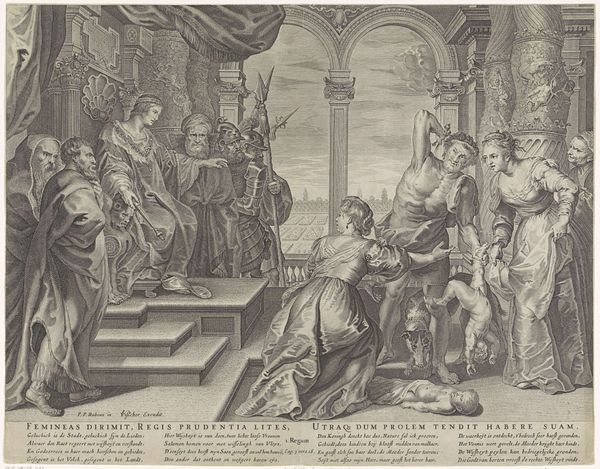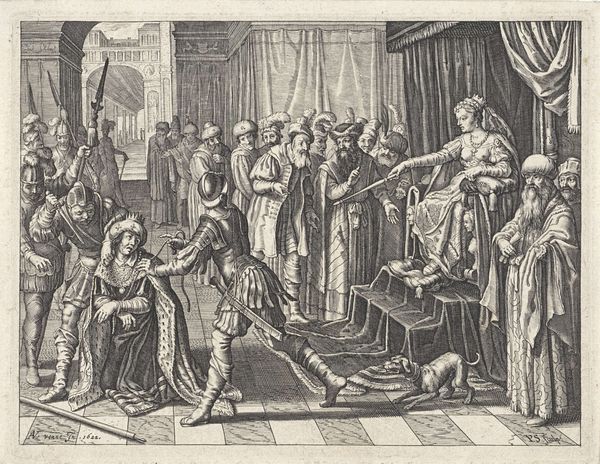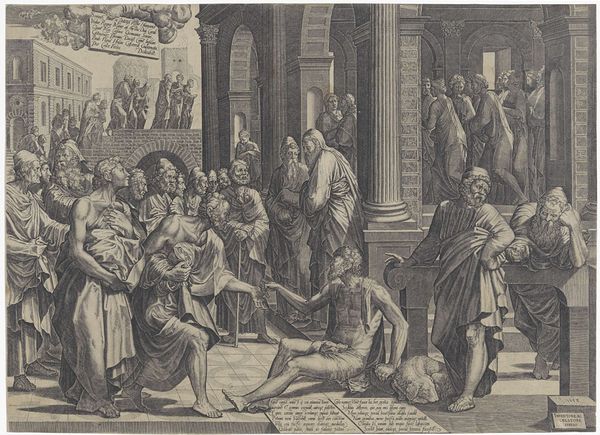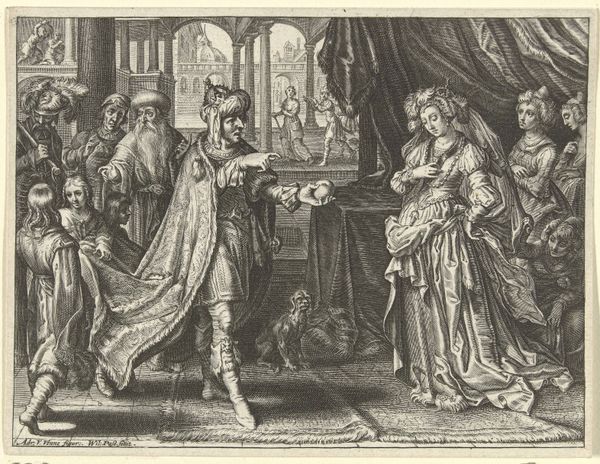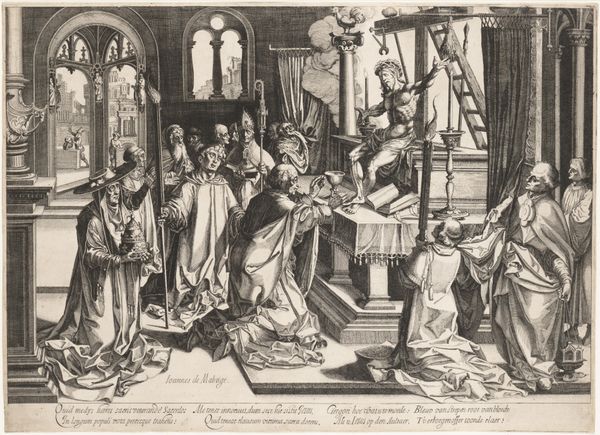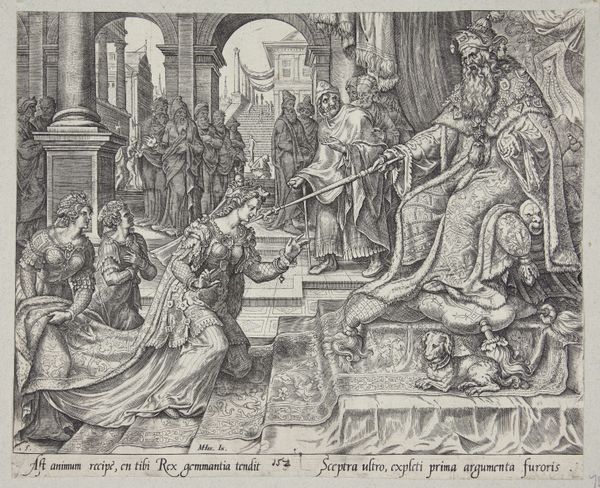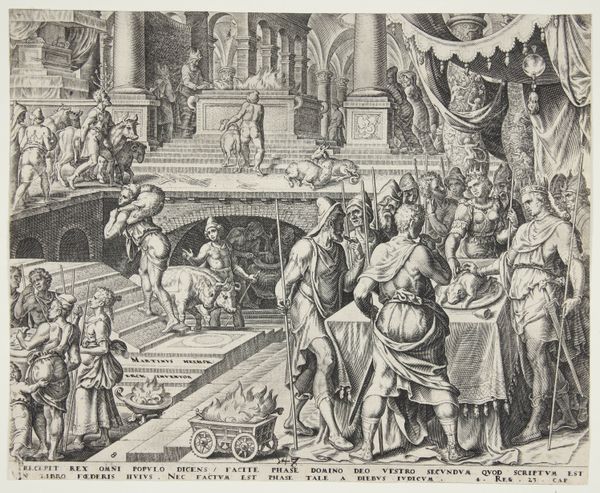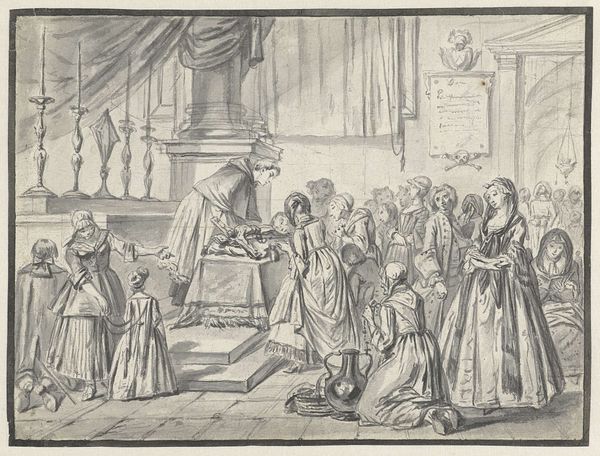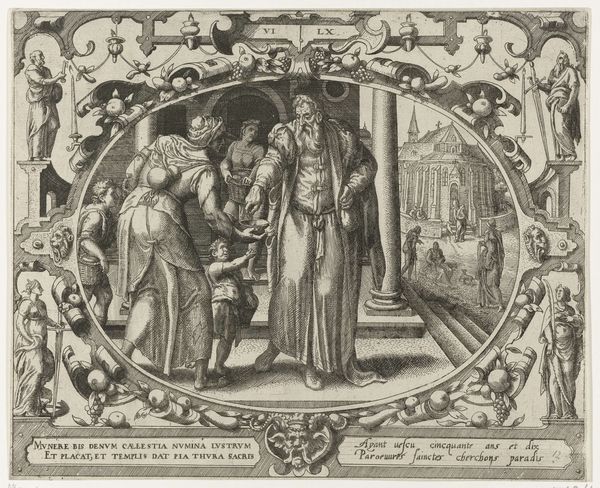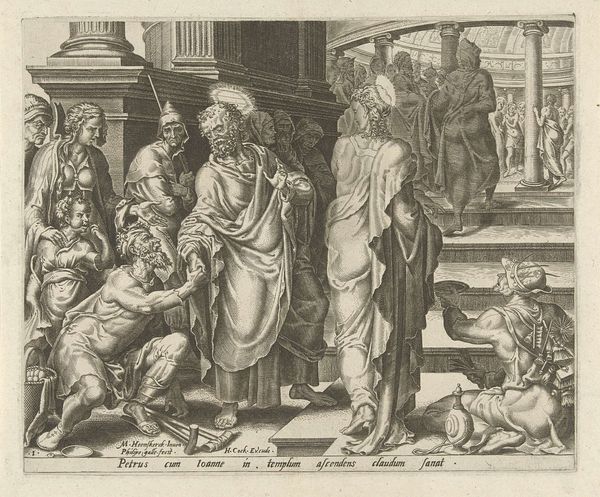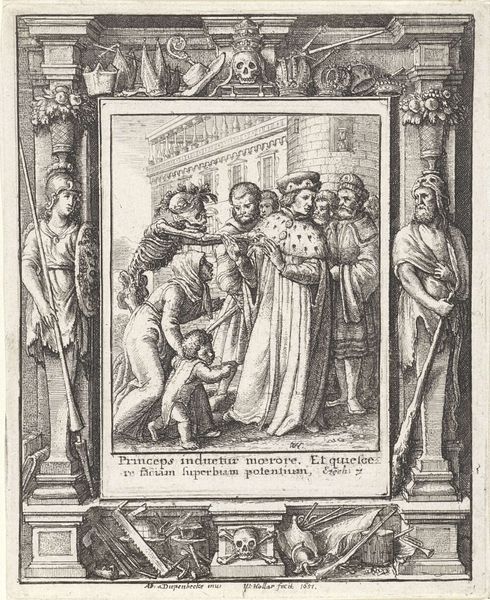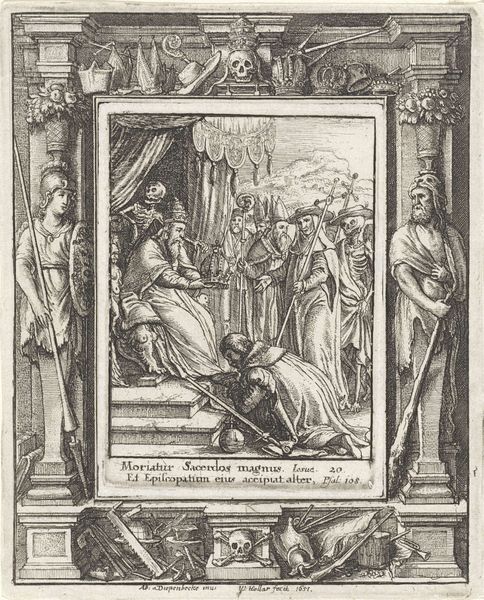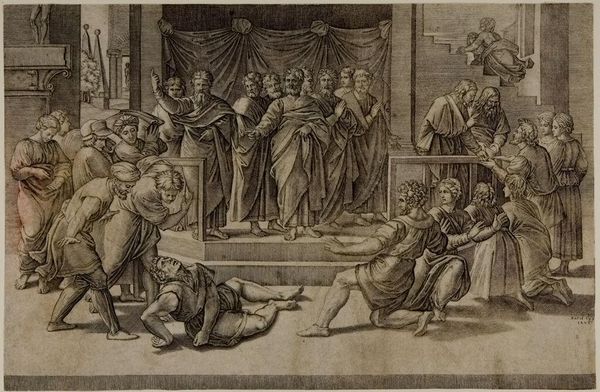
Onderwerping van zes Duitse steden, 1547 Possibly 1555 - 1640
0:00
0:00
#
pen drawing
#
mechanical pen drawing
#
pen illustration
#
pen sketch
#
pencil sketch
#
old engraving style
#
personal sketchbook
#
pen-ink sketch
#
pen work
#
pencil art
Dimensions: height 158 mm, width 231 mm
Copyright: Rijks Museum: Open Domain
Editor: This intricate pen drawing, "Onderwerping van zes Duitse steden, 1547" by Dirck Volckertsz Coornhert, held at the Rijksmuseum, seems to depict a scene of surrender. The detail is impressive. How do you interpret the symbolism within this piece, especially in the context of 16th-century power dynamics? Curator: What strikes me is how this image speaks to the brutal realities of political power. This drawing becomes a visual document, showcasing the subjugation and dispossession enacted upon the German cities. The surrender, the handing over of keys, it’s all a highly gendered performance of power. What happens when cities are feminized, violated? Editor: Gendered? Could you elaborate on that? Curator: Consider how cities, historically, have been represented as female figures – think of Britannia, or Marianne. This act of ‘submission’ plays into anxieties around control, domination, and the violation of autonomy. The men pictured embody hegemonic power. Who gets to narrate this event and whose perspectives are deliberately silenced or erased in favor of consolidating this specific ideology of male triumph? Editor: I hadn’t considered the implications in that light. So, it’s not just a historical depiction, but a loaded statement about power and gender? Curator: Precisely. Coornhert's work allows us to investigate the way historical events were – and continue to be – shaped by specific power dynamics rooted in gender, race, and class. It calls us to deconstruct these systems of representation, pushing us to seek untold perspectives of the defeated. It's more than just history; it’s a lesson on how power is performed and the stories that are deemed worthy of documentation. Editor: Thank you, seeing it within the framework of power dynamics adds layers I didn’t notice before. Curator: It's crucial to remember that art isn't created in a vacuum, its messages ripple outwards, touching on identity, politics, and cultural values.
Comments
No comments
Be the first to comment and join the conversation on the ultimate creative platform.
